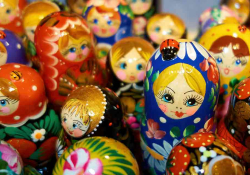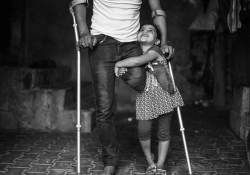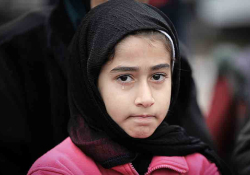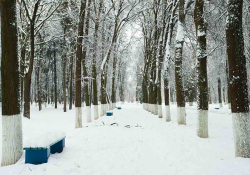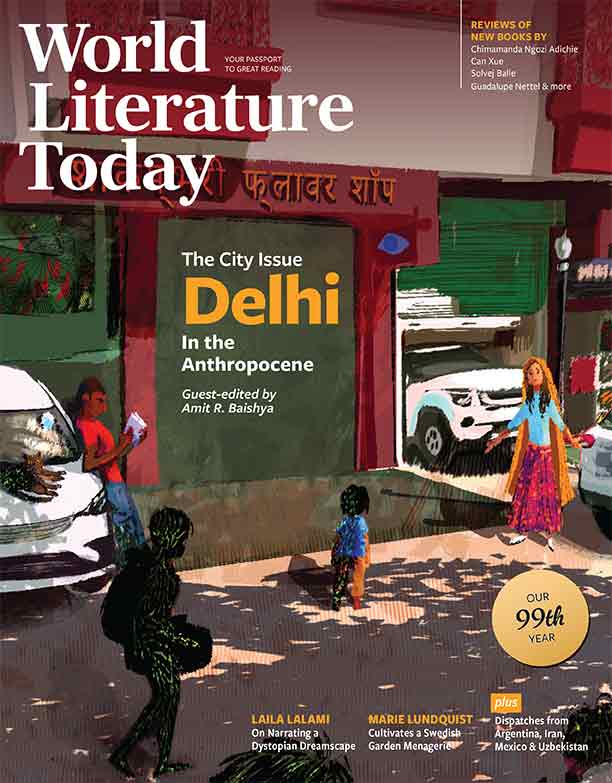Symbiot
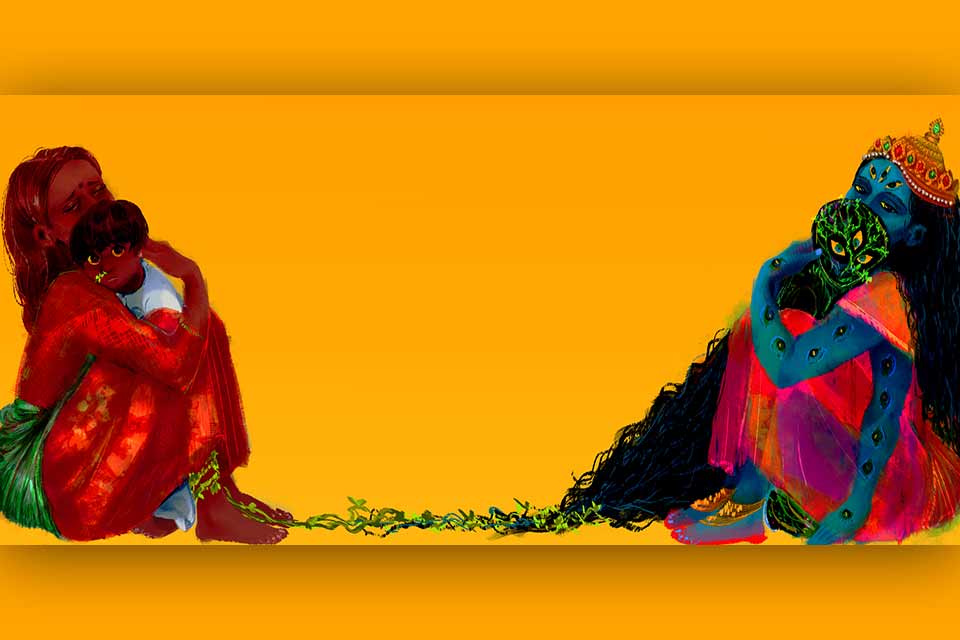
Following a crisis, a doctor’s focus shifts to a mysterious infiltration.
The little boy’s eyes were wide with terror. He sat on his mother’s lap, wearing a white-on-white T-shirt and pajamas, barefoot. He clutched her thin sari, his head turning this way and that, writhing. Her face was wet with the monsoon of her tears.
From the boy’s right nostril, a green tendril peeked out. Shy and graceful, it had tiny leaves growing at the tip.
Dr. Mehta leaned forward, elbows resting on his knees, so as to bring his face, lined and softened by the weight of his years, to the level of the young patient’s terrified gaze.
“Come now,” he said, in Hindi. “Don’t be afraid. Look my way, that’s my good boy. It’ll be alright, huh? It’ll be fine.”
A lie, of course. They all knew that. The boy would know purely from instinct and from the dull pain, the difficulty in breathing. The doctor could help with that, which was why his mother had brought him. She would know the doctor was lying because she must have seen the symptoms before. The tendrils, the leaves.
The gradual thickening of the skin. The lengthening of digits. And finally the dreaded hospital visit.
The mother’s name was Basanti. She spoke in a whisper. “Please,” she said. “Save him, Doctor. Save him.” She could not have another child. Why? Because the husband had already “gone.”
“How?” asked the Doctor.
“In this way,” said Basanti, indicating the child in her lap, with a slight jerk of her chin. “Leaves coming out of the nose. I used to cut them away and he would scream with pain. I would feed him opium to keep him quiet. I looked after him on my own. I had to. Women in my community wouldn’t let me show him to a doctor.” She trailed off.
The Doctor did not wonder why the people who came to him asked about cures rather than palliative care. The patient-doctor formula had been created in the dawn years of medicine. People expected to be cured. They had grown used to that idea.
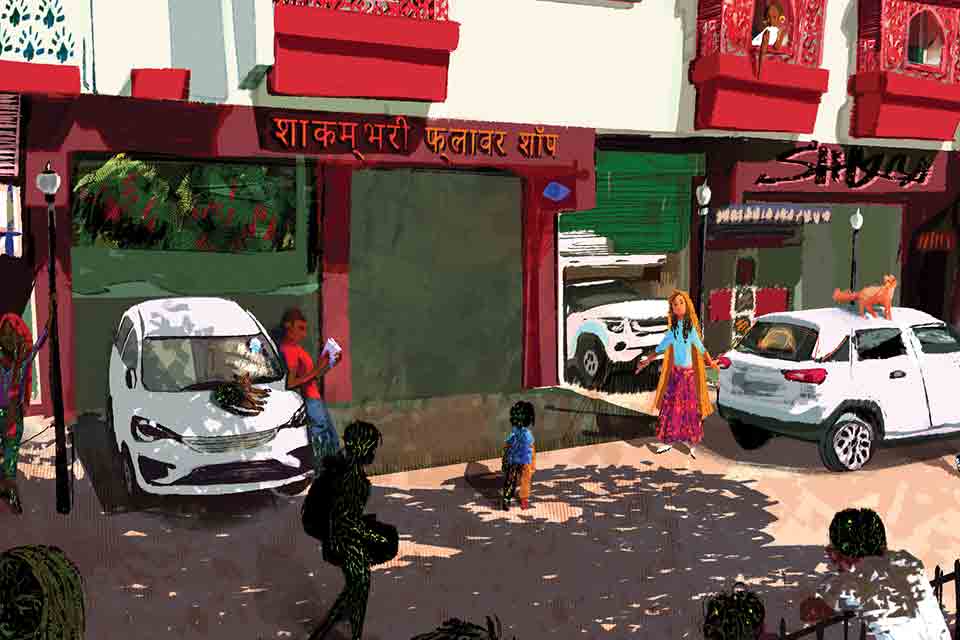
This new idea, the one about comfort rather than cure, was unfamiliar. People wanted to be returned to their original state.
This new idea, the one about comfort rather than cure, was unfamiliar. Even now, just over a year down the road, it still made no sense to the average person. People wanted to be returned to their original state. Even though it must surely be clear that there was no question of that. Ever.
The Doctor smiled kindly at the mother. He was good at being kind. “Leave him with me,” he said. “I can ease his pain.” He reached into a drawer as he spoke, had a syringe ready. “Come. Let me do it right away.”
The mother held the child still, watching the needle go into the slender brown arm as the boy trembled, breath squeaking in his chest.
“You brought him in good time,” said the Doctor in his mild tone. He knew that she would interpret his words to mean that there was hope. “In a week from now, the skin would be too tough for the needle to go in.” He glanced up at the woman’s face, seeing the hope die. It did not give him any pleasure to enact these scenes. However many times it happened, it never became routine.
He got to his feet, holding his hand out to her, to help her get up too. “Come,” he said. “Let us take him to the other room, where he can lie down. Where he can sleep.”
The woman’s lips were quivering. “Doctor,” she said, “I have heard it said that in other countries there are cures . . .”
“Pay no attention,” said the Doctor. He spoke with the authority of a professional. “There can be no cures. Everywhere you go in the world, the same thing is happening. If not today, then tomorrow. If not tomorrow, then the day after. What is happening now cannot be stopped.”
He heard his words thinning out, entering the woman’s ears and turning into rustling sounds, like paper crackling or birds chirping. Meaningless. No one wanted to face the reality. Still, it was what he trained himself to say many times over. “Because it is not an illness in the old sense.”
He wanted to add, It is not really an illness at all, but a new direction. A better direction. We should be rejoicing. Of course he did not say any such thing. That would be imprudent.
He showed Basanti into the room adjacent to the one he used as a clinic. The building they were in was one of those gracious old-style bungalows with deep verandahs and twenty-foot ceilings.
It belonged to the bygone era when the British had been in residence. It had been fitted with modern plumbing and electrical connections in the late twentieth century but had not been altered since then. The floor was polished red-cement tile, and the late afternoon sun slanted in through the narrow windows called roshan-daans, high up on the walls, just beneath the ceiling.
This room would have been one of the antechambers to the main rooms. It was originally a place where bearers, maids, or secretaries waited to be summoned. It was bare now of all furniture except a little cot in the center, under a ceiling fan that no longer stirred the humid air. There was a frame for tying a mosquito net but no net. There was a thin mattress on the cot and a clean white sheet, neatly made up. No pillow or coverlet.
Beside the cot was a tiny metal bedside table. On the table was a stainless-steel tumbler and a long-necked earthen water jar, its brick-red color discreetly echoing the wine-red floor. A steel kidney-dish contained some cotton plugs. Hanging from one of the bed rails was a folded plastic sheet.
“Come,” said the Doctor, patting the white surface of the bed, speaking to the little boy. He was clinging to his mother, while walking on his own. “Let’s get you up here—”
There was resistance and breathy crying, though little noise. The vocal cords were useless. Basanti was calm. It was as if the contents of the syringe had acted upon her as well as on her child. She had accepted the inevitable.
When the little figure was lying flat on the cot, she ran her hands over the child’s limbs, slowly and lovingly, lingering at the head and hair. She made no sound as her tears fell. The boy was no longer frantic. He gazed at his mother in resignation. His eyes followed her as she left the small room, then closed.
The Doctor held the little hand in his, waiting for the quietude to settle into something deeper than sleep. He placed the plastic sheet under the child. Then, from the front pocket of his white coat, he unclipped a small tool with a crochet hook at one end.
Gently inserting the hook into the nostril with the tendril poking from it, he drew out the living plant growing inside the boy.
There was an initial resistance and a jerk, as the roots embedded in the lungs pulled loose. The long, slender stem slid smoothly out. Red blood flowed from the nostril but the Doctor stanched it with the plug from the kidney dish.
Holding the plant with its leaves uppermost, he supported the tender, exposed root fibers carefully as he hurried into another antechamber. He plunged the roots into a waiting cup of warm chicken broth that he had prepared in anticipation of a fresh seedling. He draped the upper portion of the plant onto a supporting framework, then carried the fragile assembly to one of the back rooms.
* * *
The city was so very quiet these days. The old bungalow into which the Doctor had moved in the early weeks of what was referred to, incorrectly, as an epidemic was situated in what used to be known as Racecourse Road. There were no horses there now, of course. Hardly any traffic.
The Doctor loved to walk these streets at night. He had a pair of tall dogs as his companions and carried a handgun. In the early days of the crisis the great metropolis had been unsafe. But the city had gradually emptied out. Those citizens who did not succumb early on fled the city. They did not understand that half of them were already carriers. Civic services faltered, sputtered to a halt, then faded out altogether.
Now the remaining residents lived in small clusters, like the villages of the past. They moved around on bicycles and by bullock cart. Some rode horses and even camels. There was no electricity, running water, or gas. No postal services or telephone. People followed whatever superstitions or folk remedies they could conjure up to try and fight off the indwelling tendrils. But the stealthy encroachment was relentless. By the time the threat was acknowledged, it was already too late.
There were other doctors who, like Dr. Mehta, offered medical services of one kind or another. He had often wondered whether they were collaborators, like himself. He rather liked to think that he’d been the one to set things off. But he couldn’t actually know.
He often thought back to that evening when he, a pathologist, had been working late at the All India Institute of Medical Services. The decomposing body of a female derelict had been brought to the morgue. While examining the remains, he had discovered that a plant had taken root inside the poor, ravaged body.
It was very common, after all, for plants to grow out of the cracks in buildings, between the concrete slabs of the pavements, and out of gutters. Many old buildings sported jaunty little trees, hardy peepuls and banyans. People didn’t like to remove them. Out of superstition perhaps.
Was it a recognition that the plants were only doing what millions of street dwellers did themselves?
Or was it a type of sympathy? For a living thing, a hopeful, optimistic entity, that had chanced upon a niche and flowed into it? Was it a recognition that the plants were only doing what millions of street dwellers did themselves, riding on the flanks of the behemoth that was New Delhi, thriving within the creases and crevices?
Seeing the seedling that had sprouted in the corpse, Dr. Mehta had been inclined to smile, to pull it out and toss it away. But as he reached toward the green and living thing, he registered a keening sensation in his mind. A wordless appeal to be merciful, to spare a fellow life-form, albeit made of plant material.
He had scoffed at himself. He had feared for his sanity. He had reached once more to wrench the plant out. In that instant he had felt a movement. A shiver had shot through his entire being and the hairs had stood up on the back of his neck.
For he saw that the plant had wrapped a single, delicate tendril around the forefinger of his right hand. Save me, it said in its mute, soundless way. Save. Me. And it had tightened its grip on him, the way that a newborn might grip its parent’s finger.
* * *
As he walked through the deserted streets at night, Dr. Mehta stopped by the many seedlings that he had grafted onto the trees that lined the avenues around his bungalow. Each seedling had once grown inside a human being. Each was now experiencing a semi-independent existence, while supported upon otherwise ordinary trees.
Their mobility was still very limited. Dr. Mehta could see that. But they were evolving and mutating all the time. It had only recently been understood in botanical circles that trees communicated with one another through their root systems buried deep in the earth.
Through the connection he had gained to the seedlings, Dr. Mehta was beginning to perceive the vast network pulsing blindly but relentlessly underfoot.
Of the millions of people who were afflicted, the majority would have been like Basanti’s husband. Once the human host had died, the sapling inside him or her would be hacked to death or burned by the relatives of the deceased.
But for the millions of others who crawled away from their families to die alone, the seedlings within them may have wriggled slowly out toward a survival niche. They may have found ways to entrap small animals in their gnarly limbs. They may have been forced to inch along on the knuckles of their roots to find puddles of water to drink from.
Only time will tell, thought Dr. Mehta as he walked around at night, greeting first this then another of his green-leaved friends. He knew that he was not immune to the infiltration. If he had managed to keep himself free of it so far, it was not through any conscious effort.
He believed that it was either because the plants recognized him as an ally and therefore protected him or else because factors in his genetic makeup protected him. Either way, he was genuinely unafraid.
In his back garden he had been cultivating a few extra-special plants. One of them was a seedling that had grown inside a young girl. He had grafted it onto a graceful jacaranda sapling, then planted the young tree into the soil beside a wrought-iron bench in the garden.
He had taken to sleeping out in the open, on the bench, his big dogs curled up on the grass. In the mornings, he would wake to find that the sapling had bent her supple branches over him, protecting him from the dew.
At such times, he felt a wordless peace overtake him. He felt songbirds nesting in his heart. He felt at one with the Earth.
Providence, Rhode Island

